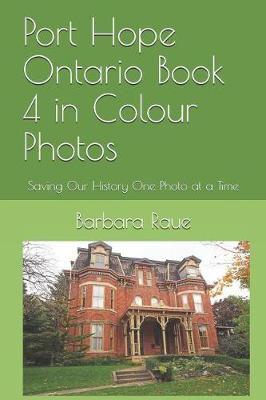Publisher's Synopsis
Port Hope is located in Southern Ontario about 109 kilometers (68 miles) east of Toronto and about 159 kilometers (99 miles) west of Kingston. It is located at the mouth of the Ganaraska River on the north shore of Lake Ontario, in the west end of Northumberland County. Port Hope's nearest urban neighbor (25 kilometers to the west) is the City of Oshawa.Before there were sidewalks, before there were buildings and even before the native Canadian people began visiting Pemedash Wationg (Fat Fire Creek) or Cochingomink, the salmon found a natural home in Port Hope. The salmon ran in huge schools up the Ganaraska River and attracted native Canadians to the harbor.The first recorded white visitor was a Sulpican monk around 1670, but many European traders called at Ganaraska during the seventeenth and eighteenth centuries. The potential for trade with the Indian population attracted our first builder, Peter Smith who set up a fur trading postherein1788.Land grants and United Empire settlers soon followed and by 1798 the land grants were secure and forty families were settled. A grist mill and a lumber mill soon followed and Hope Township's port was established in the valley at the mouth of the Ganaraska River.The town grew rapidly from four families of English descent who arrived by boat in 1793 and settled at the river mouth. Until then the area had been home to aboriginal groups-Huron, then Iroquois, and finally Mississauga-attracted by the salmon and sturgeon that swarmed in its river. More families arrived including blacksmiths, carpenters, bricklayers, and merchants. The mills drew farmers from fifty and sixty kilometers away.In 1856 the Grand Trunk Railway connected Port Hope to Toronto and the Atlantic seaboard. Its viaduct over the Ganaraska River was the second greatest engineering challenge on the route, exceeded only by bridging the St. Lawrence River at Montreal.Another railway heading north from Port Hope opened up the vast timberlands and new farms of central Ontario and stretched to Peterborough and Lindsay. Eventually it reached Georgian Bay, at Midland. Down this line came great loads of timber and grain. Some went east to England, but most was exported to the USA through Rochester across the lake.









